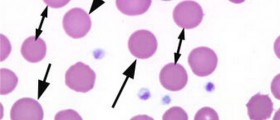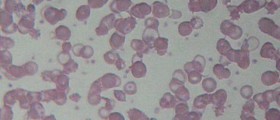
Anemia is a diseases characterized by a decrease in normal number of red blood cells or (RBCs) or less than the normal quantity of hemoglobin in the blood. Still, it can include decreased oxygen-binding ability of each hemoglobin molecule because of deformity or lack in numerical development as in some other types of hemoglobin deficiency. Hemoglobin is the iron-rich protein in red blood cells that carries oxygen from the lungs to all parts of the body, which means that, if you have anemia, your body does not get all the oxygen-rich blood that needs. As a result, you may feel tired or have other symptoms depending on how severe anemia is.
Anemia is one of the most frequent blood disorders. There are several types, each produced by a variety of original causes. Based on the morphology of RBCs, anemia can be classified in a variety of ways. The three main classes of anemia include excessive blood loss, excessive blood cell destruction (hemolysis) or deficient red blood cell production (ineffective hematopoiesis).
Symptoms of anemia might seem unimportant or vague, which is why it is undetected in many cases. The signs and symptoms can be related either to the anemia itself, or the underlying cause. Anemia can make you feel tired, fatigued, weak, dizzy, irritable, short of breath or depressed. One may also have pale skin, brittle nails, chest pain, or irregular heartbeat. Some people with anemia also have a desire to eat ice or other peculiar things, experience sexual dysfunction, or have trouble concentrating or performing mental tasks.
For many people, anemia symptoms can develop slowly. In cases of severe anemia, there may be signs of a hyperdynamic circulation such as tachycardia, flow murmurs, and cardiac enlargement. There may be signs of heart failure.
Pica, or more precisely, the consumption of non-food based items such as dirt, paper, wax, grass, ice, and hair, may be a symptom of iron deficiency, although it occurs often in those who have normal levels of hemoglobin.
Diagnosis
Anemia occurs when a patient has a lower than normal amount of red blood cells. This condition is assessed by measuring the amount of hemoglobin, the substance in red blood cells that transports and delivers oxygen throughout the body. A doctor can determine if the person is anemic by performing a routine blood test, which provides levels for both hemoglobin and hematocrit, which is the percentage of red blood cells in a blood. The measurement of hemoglobin is the most common method for assessing anemia, although hematocrit values may also be used. The normal value or range for these indicators depend on both gender and age.

















Your thoughts on this
Loading...